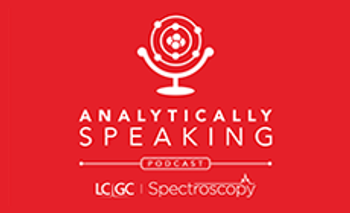
The Detection of Life: How Spectroscopy Contributes to Space Exploration Missions
The detection of life on other planets is a research area of focus for scientists in space exploration. In this Q&A, Andreas Riedo of the Physics Institute at the University of Bern offers his thoughts on how spectroscopy is being used to detect organic molecules that are relevant for life.
The detection of life on other planets is a research area of focus for scientists in space exploration. In this short Q&A, Andreas Riedo of the Physics Institute at the University of Bern offers his thoughts on how spectroscopy is being used to detect organic molecules that are relevant for life.
Riedo received Spectroscopy’s 2023 Emerging Leader in Atomic Spectroscopy
He is also leading projects for two laser ablation ionization mass spectrometer (LIMS) instruments that will be used for NASA’s upcoming Artemis Program on the moon, which plans to return astronauts to the moon (1).
Riedo spoke with the editors of Spectroscopy about the future of space exploration, and how spectroscopic instrumentation will be an essential part of NASA’s initiatives in uncovering and detecting life in the universe.
What role does spectroscopy play in future space exploration?
Spectroscopic and especially spectrometric instruments will play an eminent role in future solar system exploration missions devoted to the detection of life. These instruments currently show the measurement capabilities and detection sensitivity for finding the traces of life we are looking for since the first Viking mission on Mars in the 1970s. Therefore, I strongly believe that traces of life will be detected by such an instrument, if life has ever existed or developed beyond our Earth in our solar system.
What recent advances in spectroscopy have helped further space exploration?
It is the detection sensitivity and the capability of Raman or LIMS instruments in providing spatially resolved insights of the chemical composition of solids. One of the biggest drawbacks in previous missions was the bulk chemical analysis approach, which averages out the faint signatures of life we want to find.
What are some considerations that scientists need to keep in mind when designing spectroscopy instruments that can be used for space exploration applications?
Apart of the main three parameters which are severely limited in space exploration (weight, volume, and power consumption), the instruments should be highly versatile in their usage. This means an instrument should not only target one single organic molecule as an example, but the system should also have the capability in finding different classes of organic molecules that are relevant for life as we know it from Earth. This allows us to reduce the complexity of the mission and its costs.
How is your current work advancing space exploration, and what spectroscopic techniques are you using?
We are in the process of defining elaborated measurement methodologies regarding the detection of organic molecules that are relevant for life, including amino acids, lipids, or nucleobases. We are continuously further developing a LIMS instrument that operates in desorption mode (reduced laser pulse energy), allowing the detection of parent peaks or simple fragments of organic molecules, without the need of complex sample processing. Such a LIMS system has been so far never applied in space exploration missions but shows already to date measurement performances that excel the capabilities of flown instrumentation for the detection of signatures of life.
Reference
(1) Spectroscopy, Spectroscopy Announces the Winner of the 2023 Emerging Leader in Atomic Spectroscopy Award.
Newsletter
Get essential updates on the latest spectroscopy technologies, regulatory standards, and best practices—subscribe today to Spectroscopy.




